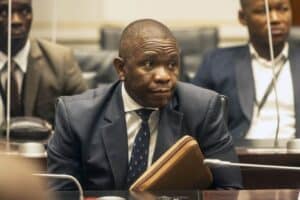Society needs real journalists who record the truth, even when that truth leaves a bitter aftertaste.

Something I saw the other day on Facebook shocked me. Someone posted a piece written to commemorate what is probably the most famous photograph taken by a South African – Kevin Carter’s haunting image of a skeletal, starving Sudanese child collapsed in the dirt while crawling to an aid centre.
In the background, a vulture sits on the ground. Waiting.
It was shot in March 1993, near a refugee camp in southern Sudan and run by the New York Times on March 26 of that year – 25 years ago. After the picture ran, there were queries from Times readers about what happened to the child. Kevin said honestly that he did not know – only that he had shooed the vulture away before climbing on a plane and flying out.
Then came the accusations. Why did you not help the child? You (and all journalists, by association) are ghouls, feasting on the pain of other human beings.
Those were things which preyed on Kevin’s mind. He felt he could have done more. He felt that a photographer had to be a human being first and a technician second.
On the other hand, he knew that the image would have sparked a flood of aid and donations (which it did) … so there was a greater good in it all. It turned out later that the child, a boy, survived … although he died 13 years later.
Tormented almost immediately after he pressed the shutter, because he realised he was profiting from suffering, Kevin’s anguish was increased the following year when the image won a Pulitzer Prize, the highest accolade in journalism. But at a time when he should have been enjoying the pinnacle of his career, all he felt was guilt. And he took his own life.
That guilt eventually killed him, I believe … although there were other factors involved, including his lifelong depression, which was not made any better by his drug use.
I worked with Kevin for a time in the early ’90s and always knew that his skin was too thin for this line of work.
“Bru, this place is just kak in winter,” he said once, as we drove south through the sere, ochre wastelands of Gauteng towards the Free State, where we had a double date: with black revolutionaries in Thabong township in Welkom and “Boerevolk” rightwingers in the town itself. “Sometimes you just feel like offing yourself, bru.”
I put that down to the dope he had been smoking.
But in 1994, when he won the Pulitzer and I went to interview him, he again remarked how Johannesburg’s concrete canyons were “no place to live, not if you want to stay sane”.
I had no answers for his questions then about the vulture photo. Where do we draw the line? Where are the ethics in journalism?
Kevin’s questions were the sort some wouldn’t even ask – like a cameraman I knew who pulled a charred human thigh bone out of a pile of smouldering bodies and pushed it into a vertical position … to make a better photo.
All I do know is that society needs people like Kevin Carter – real journalists who record the truth, even when that truth has a bitter aftertaste. I am privileged to have been able to work with Kevin and others recording some of the most tumultuous years in this country.
But I am also thankful. My daughter wasn’t even walking when Kevin’s photo ran in the New York Times. She’s now a qualified veterinarian. And I survived to see that happen …
Brendan Seery.
For more news your way, follow The Citizen on Facebook and Twitter.






